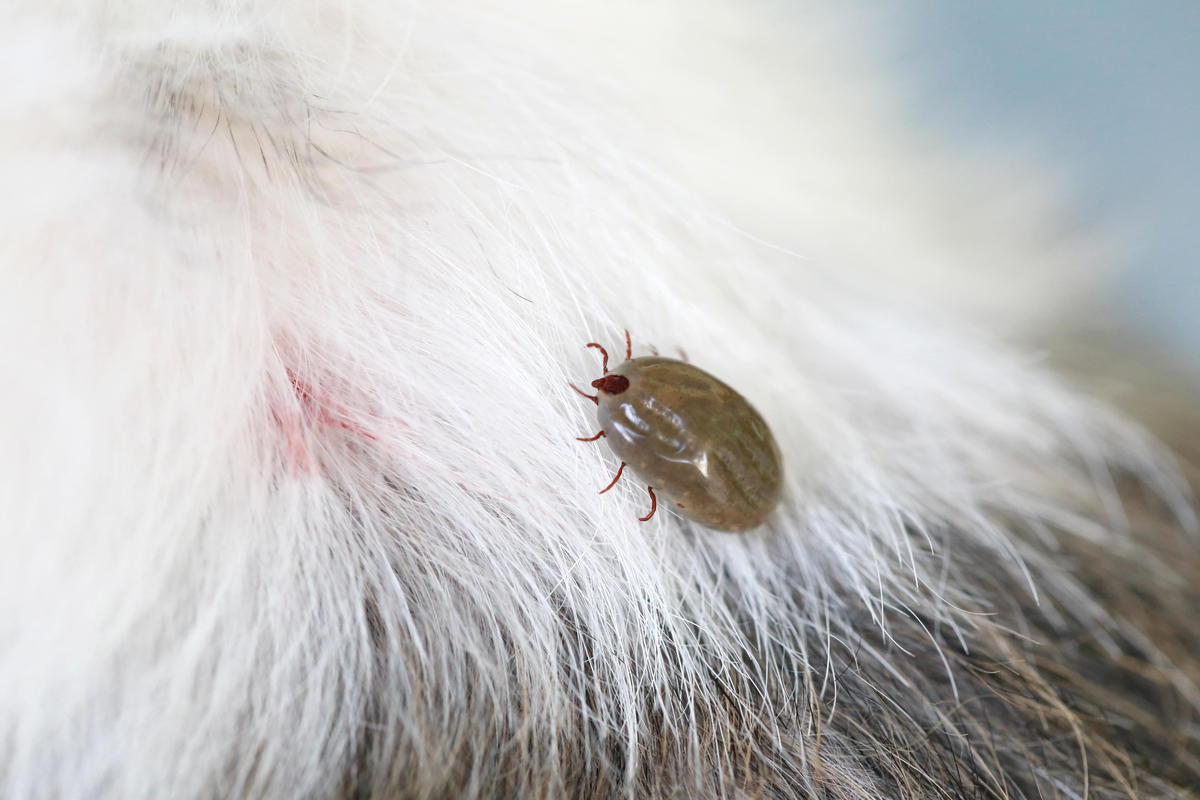Fleas or Ticks - Which are worse?
Although fleas are a common parasite that plagues almost every pet owner at least once in their lifetime, they generally don’t pose any major health risk to your pet. At most, Fleas can transmit an intestinal tapeworm or cause flea allergy dermatitis.
Ticks on the other hand are disease carrying vectors that can not only infect your pet but make you sick as well.
Let’s take a look at some facts about ticks.
There are about 4 different species of ticks that reside in Canada. The Brown Dog Tick (Rhicephalus Sanguineus), Western Black Legged Tick (Idoxes Pacificus), American Dog Tick (Dermacentor variablilis), and the Lone Star Tick (Ambyloma americanum).The most common tick in southern Ontario is the Western Black Legged Tick and is considered a high risk where ever woodland habitat exists. Ticks live near the ground and climb up tall grasses where they are easily transmitted onto a passing dog or person as they brush along side.
The Western Black Legged Tick is considered Endemic in the following areas:
Point Pelee National Park
Rondeau Provincial Park
Turkey Point Provincial Park
Long Point Peninsula
Wainfleet Bay/ Welland
Prince Edward Point
Thousand Islands National Park
The Western Black Legged Tick is responsible for transmitting Lyme disease and Anaplasmosis.
Lyme disease is caused by a bacterium called Borrelia burgdorferi. The ticks transmit the bacterium to dogs or humans after becoming infected by feeding upon infected wild animal hosts, such as rodents and birds. Ticks need to remain attached for at least 24 hours before transmitting the disease. Lyme is a multi-system disease causing infection in the tissues. Symptoms include spontaneous and shifting leg lameness that lasts 3-4 days, sometimes accompanied by loss of appetite and depression. Cases vary from mild to severe; sometimes resulting in kidney failure and death.
Anaplasmosis comes in 2 forms. Anaplasma phagocytophilum is an infection of the white blood cells that is transmitted by the Western Black Legged tick. The other form is Anaplasma platys which is an infection of the blood platelets that can lead to bleeding disorders and is transmitted by the Brown Dog Tick. Symptoms are often non-specific and can include loss of appetite, lethargy, lameness, neck pain or neurologic signs in some cases.
The Brown Dog Tick will also carry a disease called Ehrlichiosis Canis. Canine Ehrlichiosis comes in multiple forms that are often specific to different regions. Ehrlichia is an infection of white blood cells that can eventually affect bone marrow function. Symptoms include lethargy, loss of appetite, runny eyes/nose, spontaneous nose bleeds, bruising on gums or belly, lameness or joint pain.
The Brown Dog Tick is also responsible for transmission of a bacterium called Babesia, but it can also be transmitted from dog to dog if an infected dog bites another. Bebesiosis affects red blood cells and results in anemia, pallor and general weakness.
The American Dog Tick and Lone Star Tick are responsible for transmitting Rocky Mountain Spotted Fever, a disease caused by the bacterium Rickettsia rickettsii. Despite its name it is not restricted to the west coast of Canada. Rocky Mountain Spotted Fever appears suddenly with severe illness lasting about 2 weeks. If not treated early enough it can result in death. Symptoms include stiffness when walking and neurologic abnormalities.
It is important to keep in mind that all of these diseases are zoonotic which means they can be passed to people as well. The mode of transmission is directly from a tick bite, not from an infected dog directly except in the case of Babesia.
How to perform a tick check
After an outing to the park or everyday at the cottage, run your hands through your pet’s fur. If you find a new growth that looks brown, shiny and the size of a small wart it may be a tick. Since ticks are only attached at the head you should be able to lift its body.
What do I do if I find an attached tick?
Prompt removal of ticks from your dog’s skin will help prevent infection, since transmission of many diseases agents usually requires the tick to be attached for more than 24 hours. We recommend you seek help from your veterinarian. In the event that you cannot get to a veterinarian, you can follow these tips:
- Using fine-tipped tweezers, carefully grasp the tick as close to your skin as possible. Pull it straight out, gently but firmly.
- Don't squeeze it. Squeezing the tick can cause the disease agent to be accidentally introduced into your dog’s body.
- Don't put anything on the tick, or try to burn the tick off.
- After the tick has been removed, place it in screw-top bottle (like a pill vial or film canister), and take it to your veterinarian. They can send it to the laboratory for identification. Establishing the type of tick may help to assess the risk of acquiring Lyme or other diseases.
- Thoroughly cleanse the bite site with soap and water.
Ticks are becoming more of a problem in Ontario. Please call us to discuss easy ways you can control ticks and help prevent your pet from becoming a host to these parasites.
Brigitte


